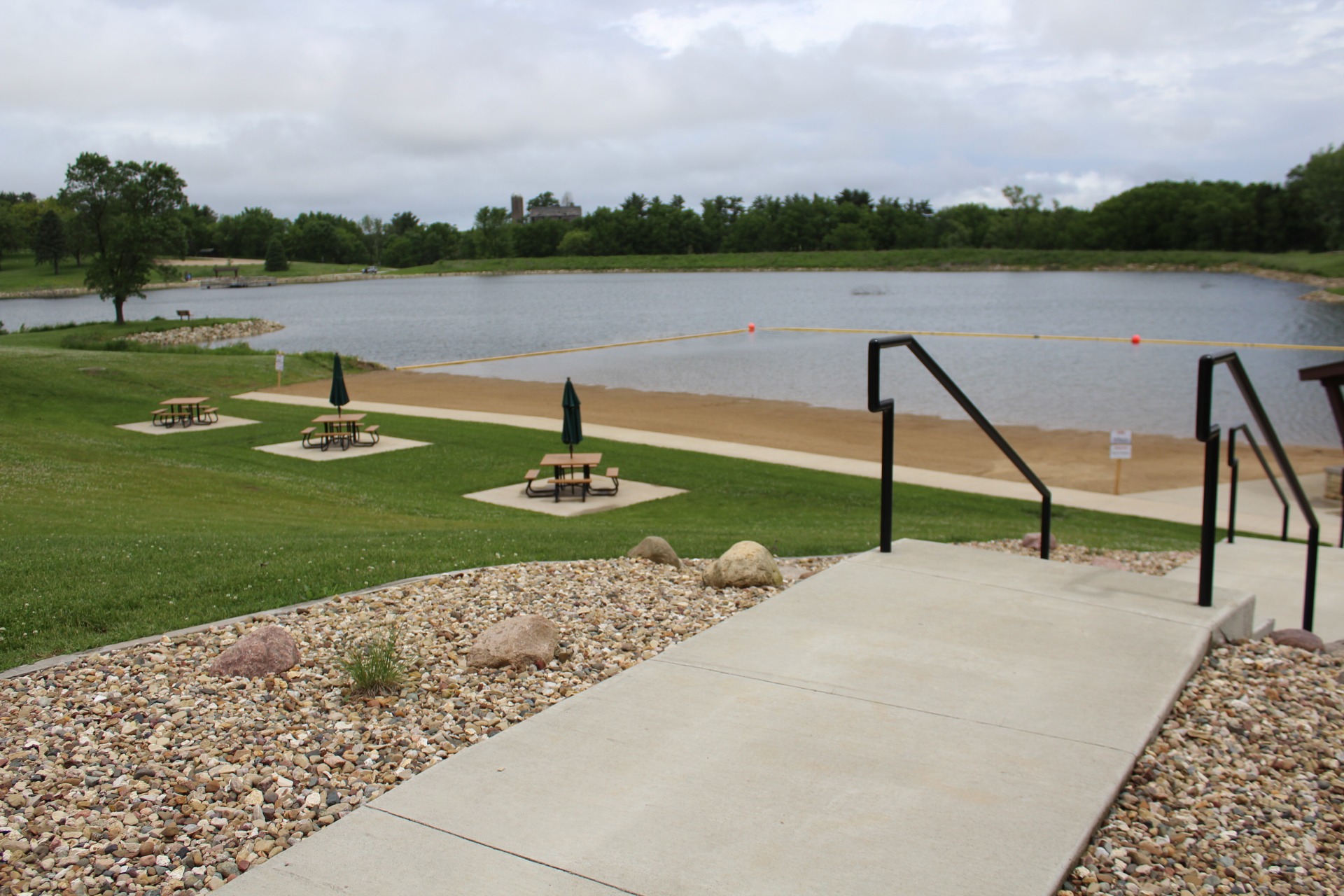Central Park Lake Beach Bacteria Test Results Posted Online Weekly

Wondering what the bacteria levels have been lately at a beach you plan to swim at? Check out the Iowa Department of Natural Resources Beach Monitoring page at https://programs.iowadnr.gov/aquia/programs/beaches Routine water quality monitoring is conducted at all of the State Park beaches and many locally managed beaches in Iowa.

Central Park Lake beach weekly bacteria test results can be found at https://programs.iowadnr.gov/aquia/programs/beaches Central Park Lake is a swim at your own risk beach.
For up to date statewide results visit the Iowa DNR Website. Routine water quality monitoring is conducted at all of the State Park beaches and many locally managed beaches in Iowa. In order to help protect the health of those wishing to recreate at the beaches, the Iowa Department of Natural Resources works with various public health and management agencies throughout the state to inform the public of the most current water quality conditions. Results for monitored beaches are published as soon as they become available.
Why monitor beaches?
Swimming in lakes or any other natural body of water involves risks. By far, the greatest risk is drowning caused in part by cloudy water, fast currents, submerged objects, or the lack of lifeguards. Water at Iowa’s state-owned swimming beaches is monitored to assess the public health risk from waterborne diseases that may result from immersion in the water.
What is the DNR monitoring?
Water samples from the beaches are analyzed for microorganisms, known as bacteria and cyanobacteria toxins. These indicator bacteria are one-celled organisms visible only under a microscope. High levels of these bacteria indicate that the water has come into contact with fecal material. Indicator bacteria (Bacteria that normally are not pathogenic [disease causing> but serve as indicators of certain types of pollution such as sewage or manure runoff) are commonly used by state environmental agencies and by the U.S. EPA to determine the suitability of beaches for swimming-type uses.
Cyanobacteria, which are often referred to as blue-green algae, are microscopic organisms that are naturally present in all aquatic ecosystems, ranging from hypersaline to freshwater environments, and are important components of food webs and the nitrogen cycle. Cyanobacteria can form blooms that sometime produce toxins. The Iowa Department of Natural Resources analyzes for cyanotoxins called microcystins which is the most widespread and frequently occurring cyanobacterial toxins produced by blooms found in Iowa’s surface waters.
Can these bacteria make me sick?
The indicator bacteria for which we monitor do not themselves make you sick. These bacteria are easy to collect and analyze and are relatively safe to handle. They are very common in the environment, including lakes and rivers. High levels of these bacteria indicate that the water has come into contact with fecal material and that pathogens or disease-causing microorganisms may be present. Levels of indicator bacteria above the water quality standard indicate a greater risk of becoming sick for people recreating in the water.


